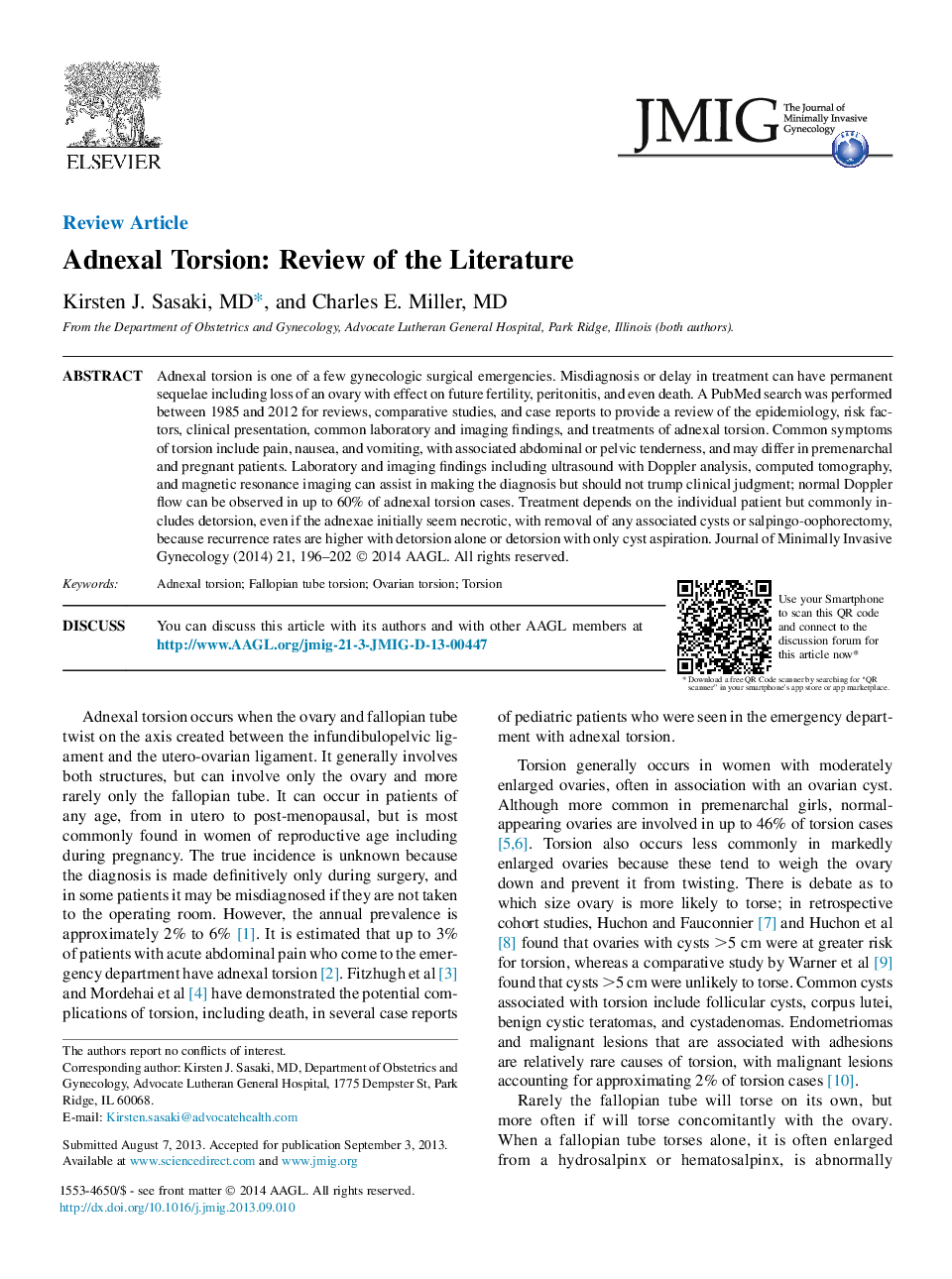| Article ID | Journal | Published Year | Pages | File Type |
|---|---|---|---|---|
| 3962000 | Journal of Minimally Invasive Gynecology | 2014 | 7 Pages |
Abstract
Adnexal torsion is one of a few gynecologic surgical emergencies. Misdiagnosis or delay in treatment can have permanent sequelae including loss of an ovary with effect on future fertility, peritonitis, and even death. A PubMed search was performed between 1985 and 2012 for reviews, comparative studies, and case reports to provide a review of the epidemiology, risk factors, clinical presentation, common laboratory and imaging findings, and treatments of adnexal torsion. Common symptoms of torsion include pain, nausea, and vomiting, with associated abdominal or pelvic tenderness, and may differ in premenarchal and pregnant patients. Laboratory and imaging findings including ultrasound with Doppler analysis, computed tomography, and magnetic resonance imaging can assist in making the diagnosis but should not trump clinical judgment; normal Doppler flow can be observed in up to 60% of adnexal torsion cases. Treatment depends on the individual patient but commonly includes detorsion, even if the adnexae initially seem necrotic, with removal of any associated cysts or salpingo-oophorectomy, because recurrence rates are higher with detorsion alone or detorsion with only cyst aspiration.
Related Topics
Health Sciences
Medicine and Dentistry
Obstetrics, Gynecology and Women's Health
Authors
Kirsten J. MD, Charles E. MD,
